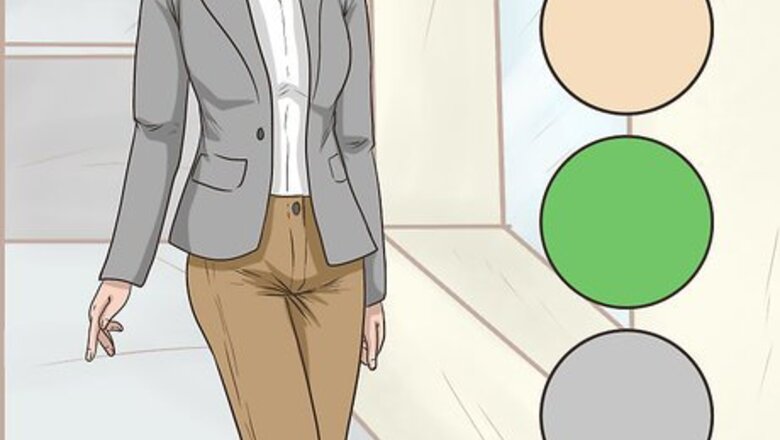
views
Dressing for the Office
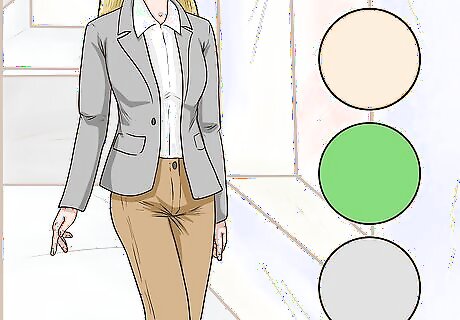
Dress in mostly neutral colors to look professional. Traditional office-wear usually consists of black, dark grey, and navy, but you can also incorporate other neutral tones into your wardrobe, including camel, cream, army green, and light blue or grey. In addition to looking more professional than bright, trendy shades, it will be easier to mix-and-match your wardrobe when you’re getting dressed each day, since many neutrals look great together. For instance, you’d be ready to take on even the toughest board meeting in a cream-colored sheath dress with a camel-colored jacket and a pair of tan pumps. It’s fine to add in a pop of color to brighten up your outfit. For instance, if you’re wearing a dark grey pencil skirt and a black blazer, you might want to wear a sleeveless fuschia top underneath the blazer to keep the outfit from being too drab.
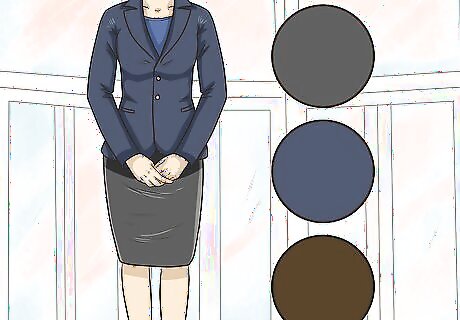
Stick to darker hues when you need to be taken seriously. As a woman, you may feel like you have to prove you have what it takes to be the boss, especially if you look very young. Darker colors project authority, they look more professional, and they’ll send the message that you’re serious about your role. Traditional business colors can also help you project confidence if you have to take on a tough task at work, like making a presentation. Identify what makes you feel confident, and try to integrate that into your style.
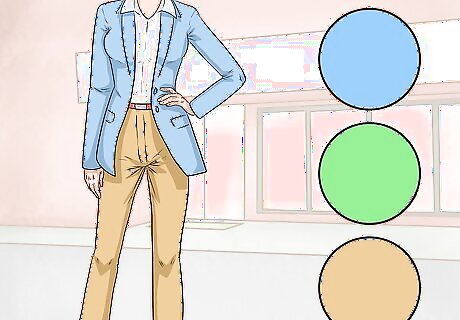
Wear light colors to make you seem friendlier. If you feel like you need help coming across as approachable, opt for suits and dresses in lighter colors. This will help soften your image, which can make you seem friendlier and more approachable. Earth tones like tans, greens, and blues will make you seem especially welcoming. It can be smart to wear these colors if you’re attending an event where you’re speaking to or meeting with the public. Even in a business environment, don't be afraid to embrace your femininity!
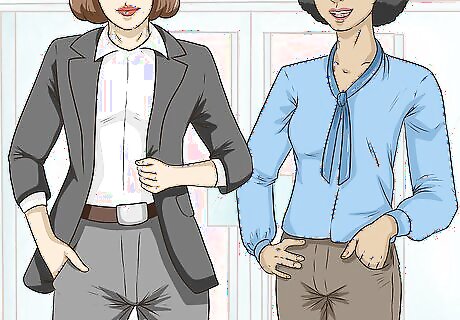
Opt for rich fabrics like wool and silk to seem more put-together. To project the confidence and authority of a CEO, try to dress in high-quality materials whenever possible. Wool is the most popular option for suits, and flowy silk blouses never go out of style. Even though these materials cost a little more, you’ll typically be able to get a lot more wear out of them than you would if you purchased clothing made from cheaper fabrics. Of course, keep your climate in mind. If you live somewhere with very hot weather, you might opt for linen or seersucker fabrics, instead. It's worth spending the extra money to invest in a few quality pieces for your wardrobe. When you're shopping for investment pieces, make sure you choose classic styles that won't go out of fashion anytime soon. Tip: Even if you don’t have a CEO’s budget, you can still dress like one. Visit department stores during holidays, when they’re more likely to offer a sale. Also, check the clearance rack to find off-season items at a fraction of their original price.
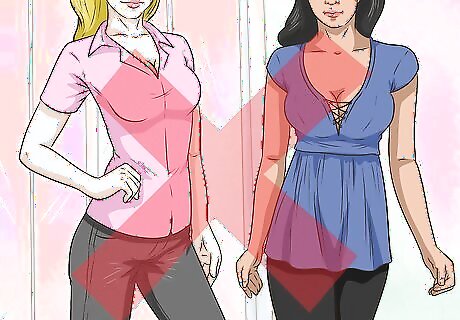
Avoid tight-fitting or low-cut clothing. As a CEO, it’s important to project confidence and competence. If your clothing is too tight or you’re showing too much cleavage, you can send the wrong message, and the focus will be on your body, rather than your accomplishments. To avoid this, opt for clothing that skims your figure without being form-fitting or baggy, and cover up your décolletage. If the top you’re wearing is too low-cut, wear a sleeveless shell underneath it, or take it to your tailor and have an extra stitch sewn into the neckline to close it. Also, when you’re choosing button-down shirts, make sure they fit comfortably and don’t gape across your chest.
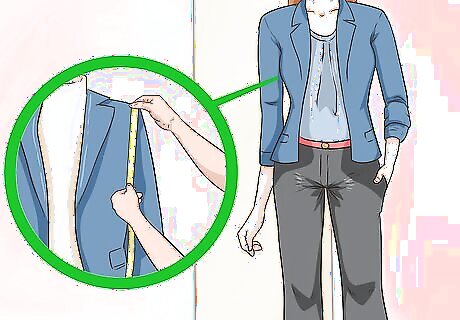
Have your clothing tailored to fit you when possible. The way your clothes fit is almost more important than the pieces that you choose. Whenever you buy new work clothes, consider having them professionally tailored so they fit you perfectly. A jacket that’s too bulky in the waist will seem messy and unprofessional, but if you take that jacket to a tailor and have it taken in a couple of inches in the waist, you’ll look put-together and stylish. You can also have pants, skirts, and dresses tailored to be the perfect length for you. A tailor can help your clothes fit you perfectly, no matter what your body type is.
Choosing Individual Pieces
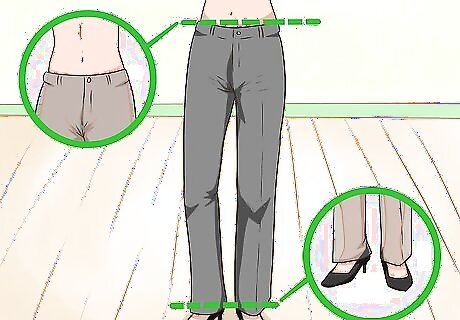
Choose pants that sit at your waist and graze the tops of your shoes. If you’re wearing pants or trousers, opt for styles that sit at the top of your waist. Also, straight-leg and boot-cut styles should cover most of the back of your shoe and should graze the top. Avoid low-rise pants, which look very informal. If you’re wearing skinny jeans, the hem should land right at your ankle. If they’re longer, they’ll bunch up at the bottom, which looks messy.
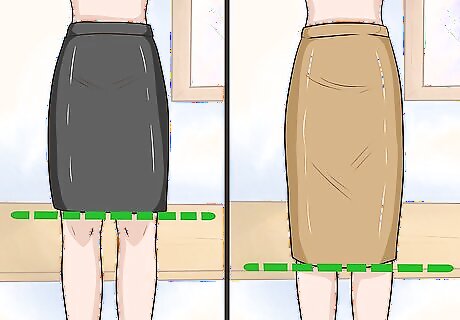
Opt for skirts that hit at, just above, or just below your knees. Knee-length skirts are the most professional-looking, and they’ll also help you avoid any embarrassing faux-pas due to showing too much skin. A skirt that hits just above the knee is very flattering for most body types, but if you’re very tall, a skirt that’s hemmed just below your knee may be a more flattering proportion for your height. Ankle-length skirts are acceptable too, but they can be difficult to style in a way that looks professional. If you want to wear one, try to pair it with pieces like a tailored button-down and stylish ankle boots.
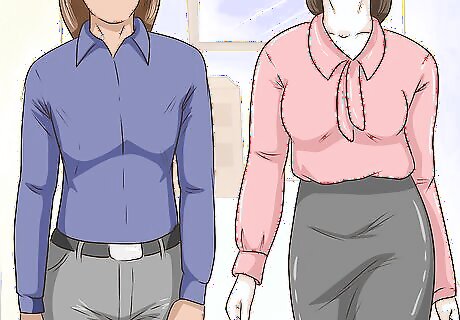
Choose clean-cut tops that fit you well. When you’re shopping for shirts, be sure to try them on to make sure you get a perfect fit, since a shirt that’s too tight or low-cut can send the wrong message in the office. Whether you prefer button-down styles, polo shirts, or flowy blouses, stay away from styles that show too much skin, and if a shirt is see-through, always wear a shell or cami underneath. Keep in mind that spaghetti straps are not considered office-appropriate.

Dress up separates with a suit jacket or blazer. Whether you’re wearing pants, a skirt, or even a dress, you can take your outfit from business casual to ready for the boardroom by tossing on a structured jacket or blazer. Look for a jacket that is slightly squared in the shoulders and nipped-in at the waist for the most professional look. For instance, if you’re wearing a camel-colored pencil skirt, a yellow blouse, and a pair of loafers, try topping it with a cream-colored structured blazer to pull the look together. If your office is more informal, or you have a Casual Friday policy, you can even dress up dark-colored jeans with a jacket and a pair of ankle boots.
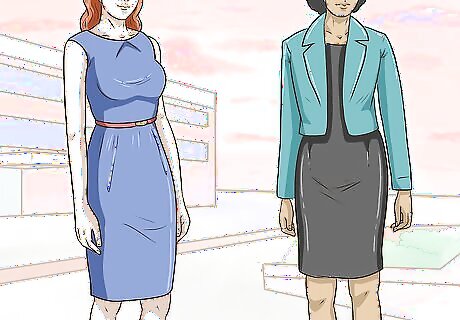
Go with a sheath dress for a timeless business look. A sheath dress can be incredibly versatile, especially when you choose one in a neutral color. You can dress it up or down by layering, making it just as perfect for a busy day full of paperwork as it is for an important meeting. Layer your sheath dress with a structured jacket, a comfortable pair of heels, and a low bun for an easy way to look put-together all day. Take your hair down, lose the jacket, and switch to a pair of strappy sandals to go from day-to-night in a snap! Sheath dresses are a great way to stay cool in hot weather, too.

Opt for structured outerwear in cold weather. When the weather turns chilly, it can be tempting to throw on a hoodie or a shapeless sweater. However, to keep your look professional and chic, upgrade your winter wear to a nice trench or pea coat. Even if you won’t be wearing it all day, you’ll make a great impression as you’re heading into the office each day. A pea coat looks perfect on top of sleek wool trousers and a pair of leather boots, for instance! If the weather is cool, rather than cold, try tossing on a leather jacket to look edgy but put-together.
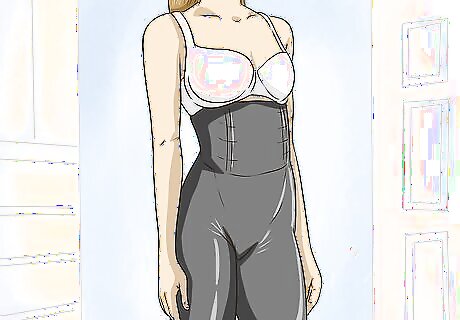
Invest in supportive shapewear. What you wear underneath your clothing can make a big difference in the fit. Avoid tight-fitting shapewear that will leave visible lines, as this can make even the most put-together outfit look unprofessional and messy. Instead, opt for styles that will lift and support your figure. Not only will you look your best, but you’ll feel more confident and comfortable all day. Shapewear can include bras, underwear, slimming body shapers, and pantyhose.
Accessorizing at Work
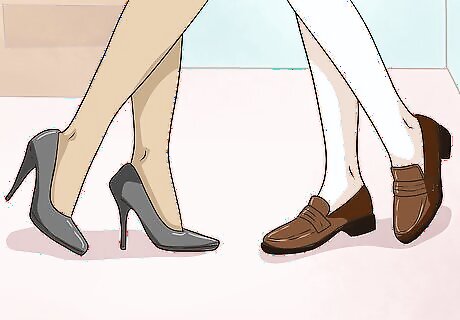
Wear practical dress shoes to work. Depending on your style, you can wear heels or flats to the office. However, make sure that whatever you choose is comfortable. If you want to be the boss, you’ll need to be able to hustle and get things done all day, and shoes that pinch your feet or make it hard to walk won’t help you accomplish your goals. Boots, pumps, loafers, and dressy flats are all great options for the office. Your shoes should be neatly polished to ensure they’re work-appropriate. Avoid open-toed shoes, as these typically come across as unprofessional. If your office is very casual, a pair of nice-looking sneakers may be acceptable, but they should still be free from scuffs.
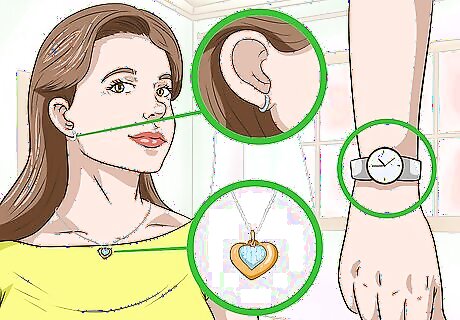
Keep your jewelry minimal if you wear any. While it’s fine to accessorize, you don’t want the focus to be on your flashy jewelry. A good rule of thumb is to only wear about 3 accessories with any outfit. Also, for the most part, stick to simple, small accessories, like stud earrings or a pendant necklace. For instance, if you’re wearing a suit, you might wear a nice watch, a pair of stud earrings, and a pretty ring. Tip: If you wear a wedding ring, you do not have to include this in the number of accessories you wear.
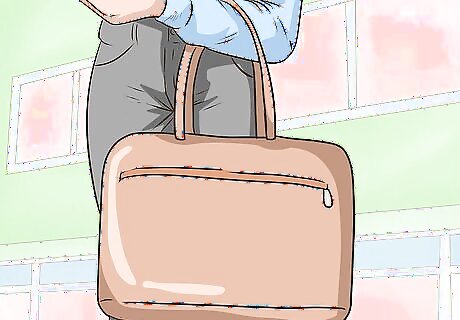
Carry a nice briefcase or laptop bag to keep your items organized. As your responsibilities increase at work, a small handbag probably won’t hold everything you’ll need for the day. Instead, opt for a stylish leather briefcase or laptop bag. That way, you’ll be able to bring your laptop, tablet, or any important paperwork with you, and you won’t have to worry about dropping anything on your commute.
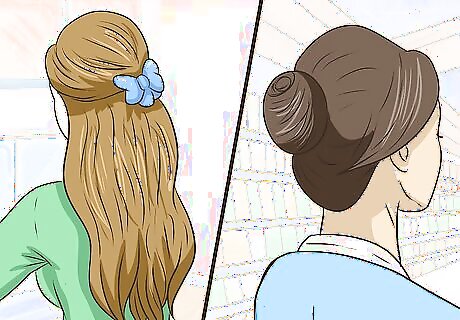
Style your hair each day. Like it or not, your hair is part of your outfit, and you’ll need to take a little time each day to make sure it looks nice. If you’re wearing your hair down, blowdry it into a sleek style, or curl it into neat waves. If you’d prefer to wear it up, smooth your hair into a Do a bun or a classic chignon, twist it into a French braid, or pull it into a low ponytail.
Following Industry Guidelines
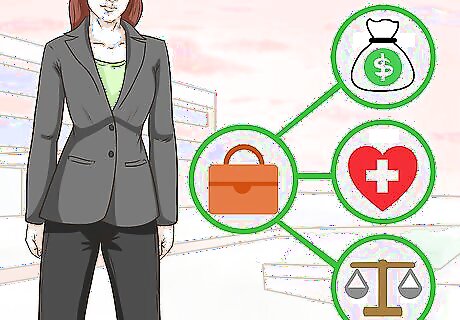
Dress more conservatively if you work in an industry like banking or law. Some professions come with the expectation that you’ll adhere to a strict business dress code. Even if you’re running your own business, it’s best to follow the same guidelines that others in your industry abide by. Typically, this means wearing darker colors, suits or jackets, and conservative footwear to work. Other conservative industries might include hospitality and the medical field.
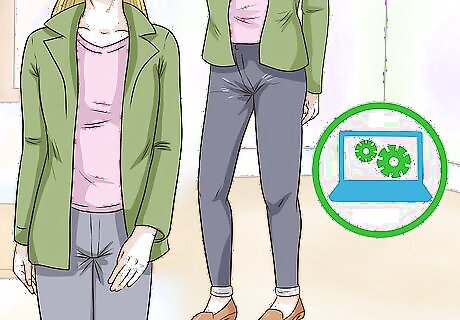
Wear more informal styles if you work at a startup or in the tech industry. The tech industry, non-profit organizations, and other startups typically don’t require you to look quite as buttoned-up. To dress like a CEO, try to dress a little nicer than the rest of the employees in your office, since the CEO typically sets the tone for the company. For instance, if it’s fine for employees to come to work in jeans and sneakers, you might opt for dark-wash jeans and a pair of flats, instead. Keep in mind that you’ll still need a nice suit or dress for meetings with investors or other professional occasions. If you’re not sure about the formality of an office, arrange a visit before you start work, or call the head of the Human Resources Department and ask them what style of dress is preferred.
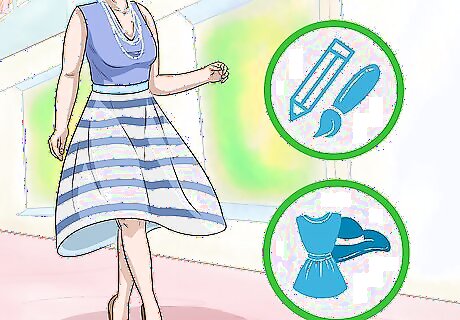
Show off your style if you work in a creative industry. If you work in an artistic field like film or fashion, you can often set your own rules regarding the dress code. In fact, people will likely expect you to have a more eclectic style than would be acceptable in a typical office. However, if you want to wear a basic uniform of jeans and a T-shirt every day, that’s fine too. For instance, if you worked as the CEO of a fashion magazine, you would probably be expected to look stylish every day. If you want to look like you’re in charge, opt for smart, versatile pieces from your favorite designers, like tailored trousers, on-trend blouses, and outerwear with interesting details, like a suit jacket with a contrasting lapel or a stunning red trench coat. Tip: To dress like a CEO even when you're off the clock, follow the dress code for various social situations. For instance, you might wear a long gown when you're attending a formal event, but you would probably want to dress down in jeans and sneakers if you were attending a ball game.




















Comments
0 comment